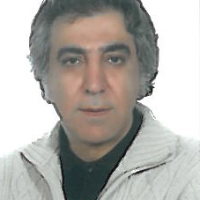The living Experience of Landscape and its Rhetorical Representation in the Descriptions of Julien Gracq
The relation between human being and the world, has become the center of attention since the appearance of the Romanticism movement in 19th century. By the second half of the 20th century, the science of geography developed and the human aspect of the geographical space was studied more. Maurice Merleau-Ponty, the phenomenological philosopher of 20th century, believes that the relation between man and its environment is based on his sensitive experience which inspires poetical ideas. In his point of view the human body can be considered as the common point between the consciousness of the author and the world around him. He also thinks of the physical aspect of the language, as the exceptional style of the writer. In fact the language incarnates the idea of the author’s viewpoint and indicates his relation with the world. Michel Collot, inspired by Merleau-Ponty, propounds the concept of “landscape” in the literature. He claims that the description of a landscape depends on the spiritual attitude of the writer as well as on his physical situation. He declares that the language and the style of the writer are highly influenced by the emotions he receives from the world around him. The man who is situated in a landscape, is related to the world by all his senses with whole body. Here in, we study the confluence of human body and the world within the novels of Julien Gracq, the 20th century French writer. His descriptions of landscape represent the human aspect of the space. With the help of figures of speech such as personification and metaphor, he tries to find the relation between human being and the world. In this paper, the main problem is how the interaction between the human being and the world around him is manifested in the novels of Julien Gracq. Indeed by the help of literary devices he tries to connect the human roots to the earth; this relation is based on the sensitive experience of the artist in the world and represents the triangular unity of me (the artiste), the world and the words which is mentioned by Michel Collot inspired himself by the phenomenology of Merleau-Ponty.
- حق عضویت دریافتی صرف حمایت از نشریات عضو و نگهداری، تکمیل و توسعه مگیران میشود.
- پرداخت حق اشتراک و دانلود مقالات اجازه بازنشر آن در سایر رسانههای چاپی و دیجیتال را به کاربر نمیدهد.



